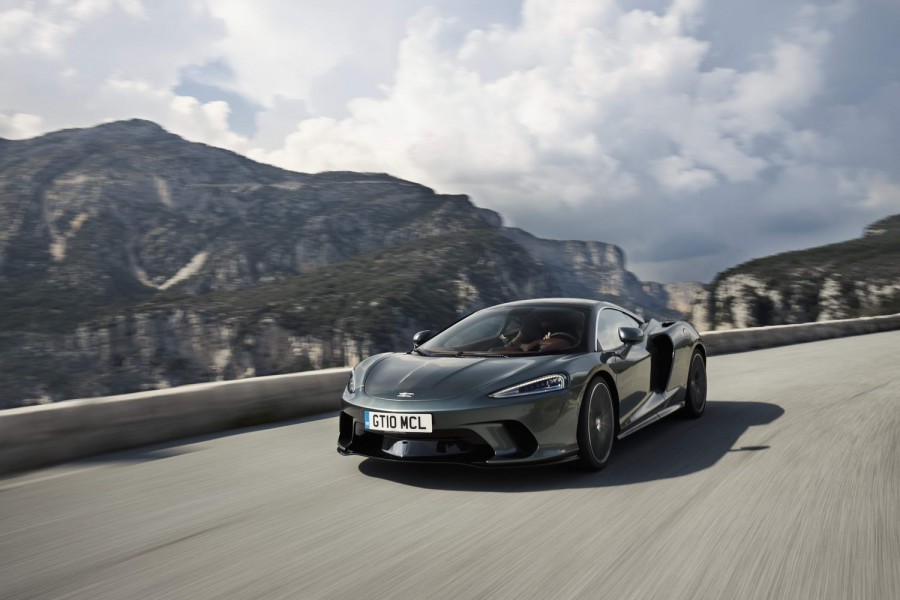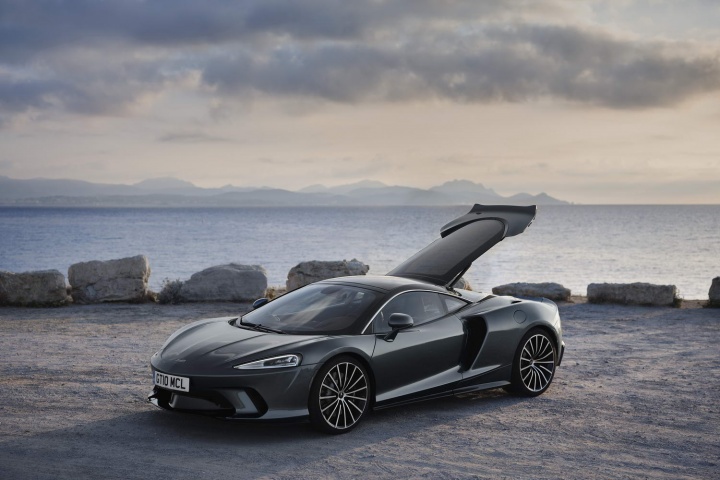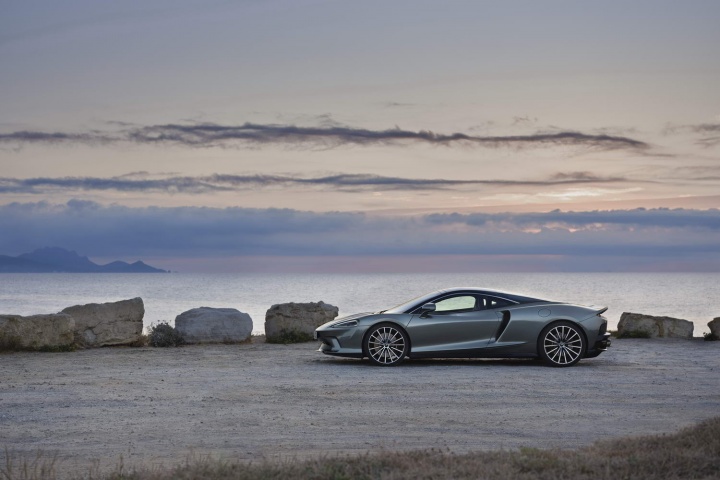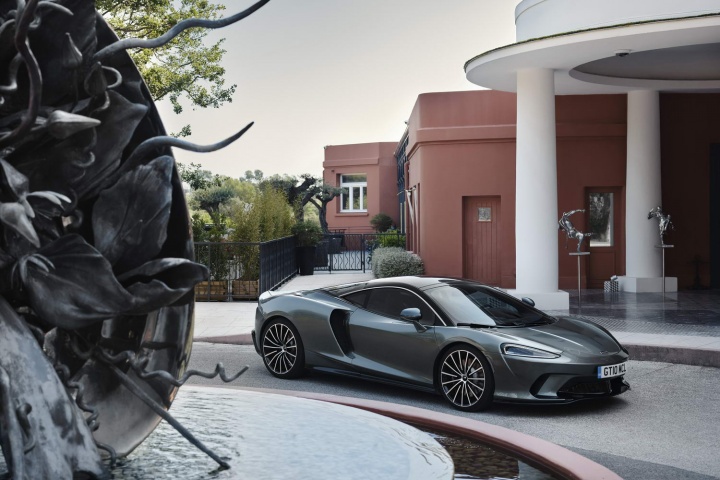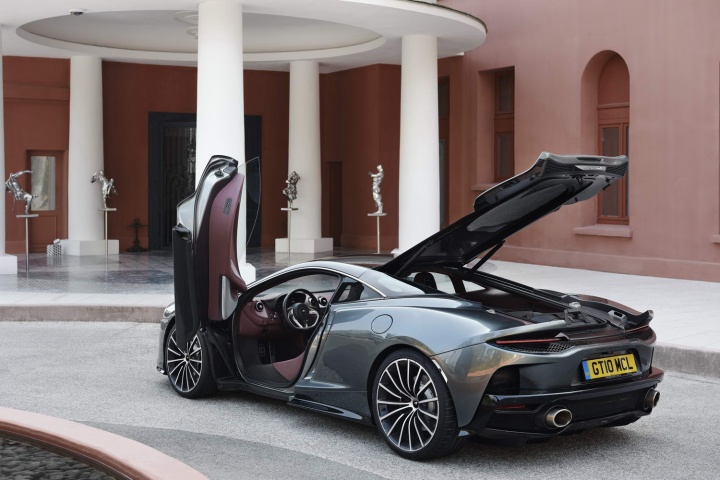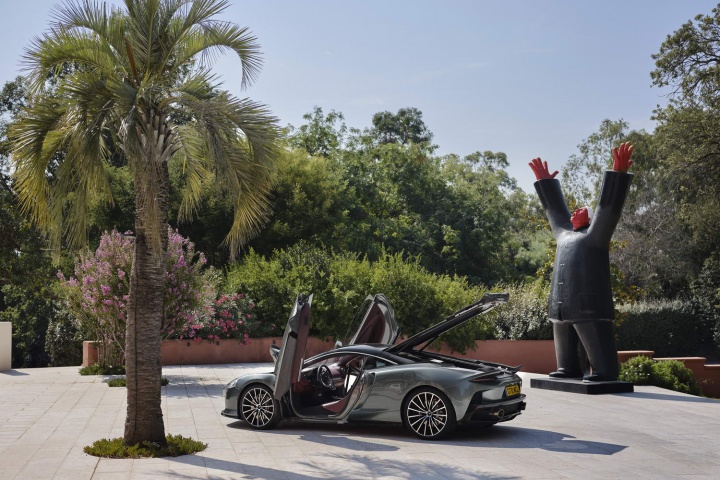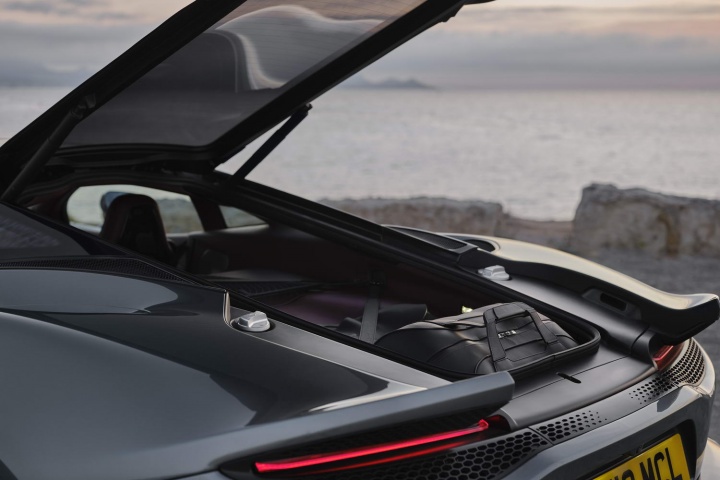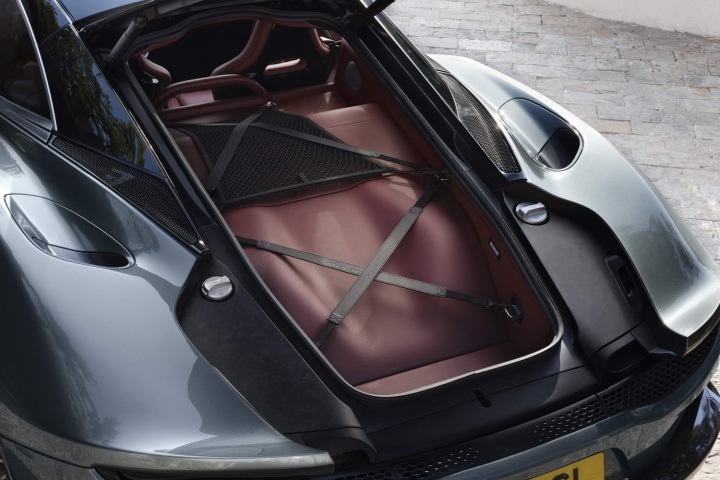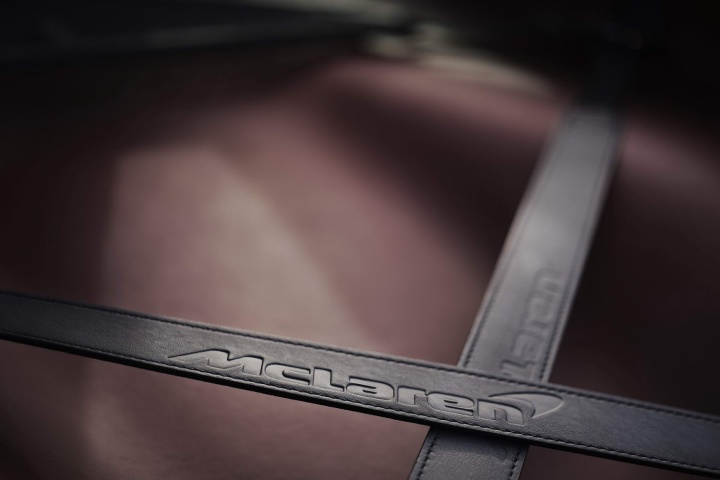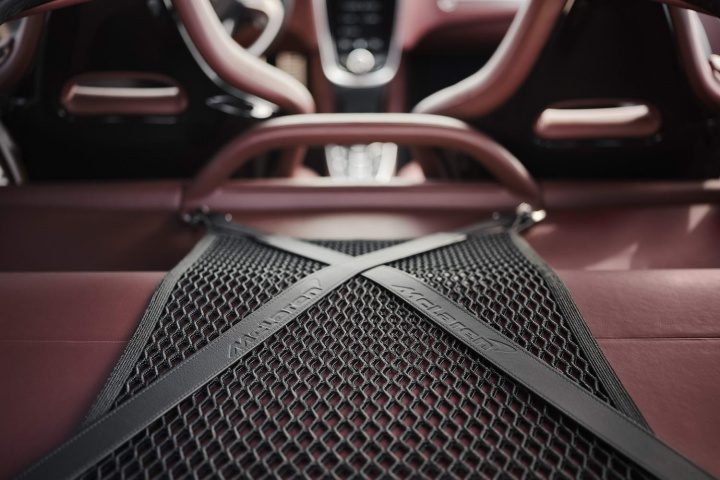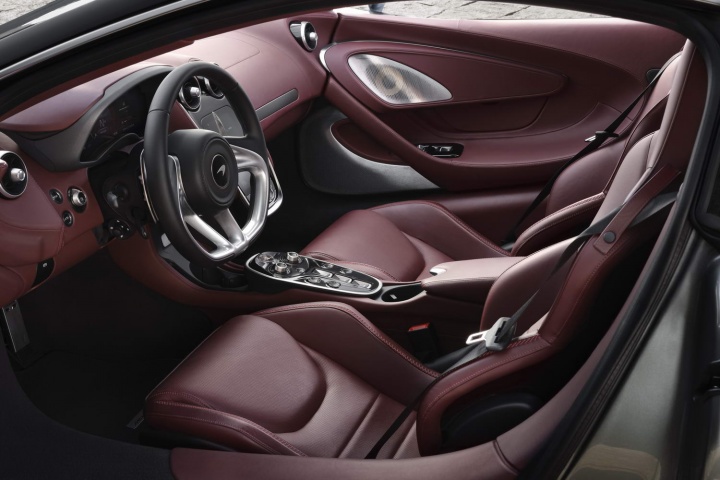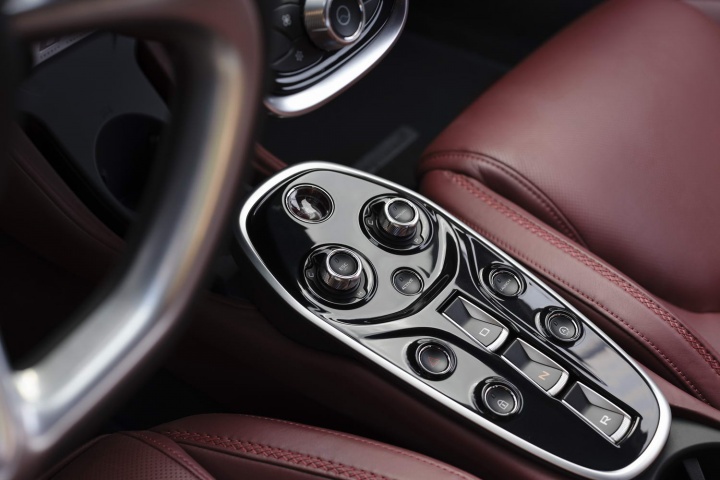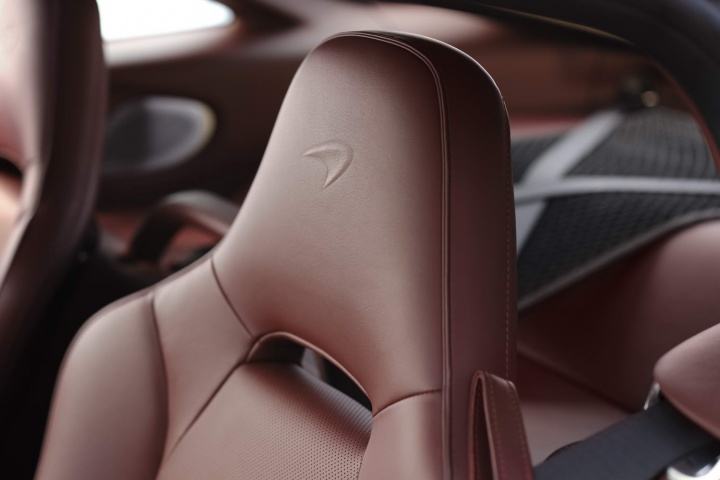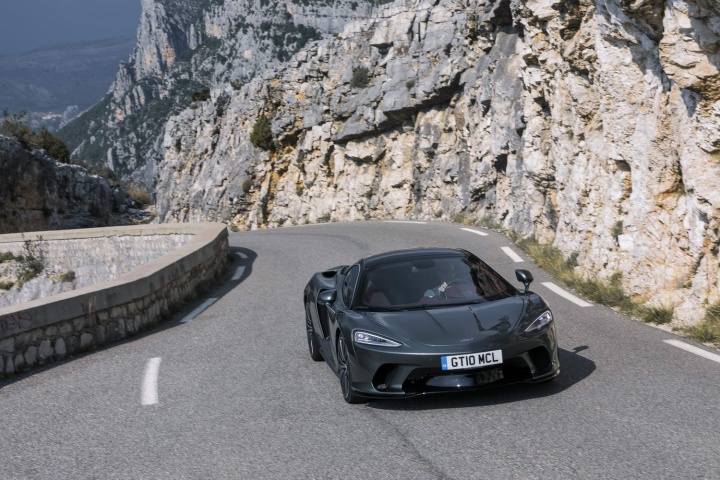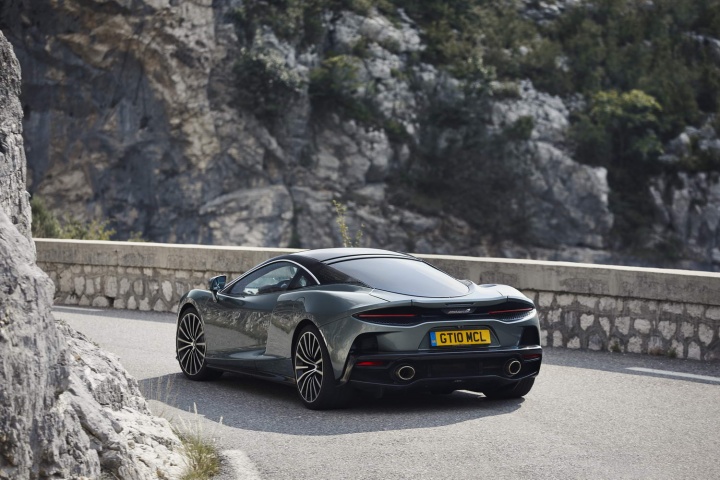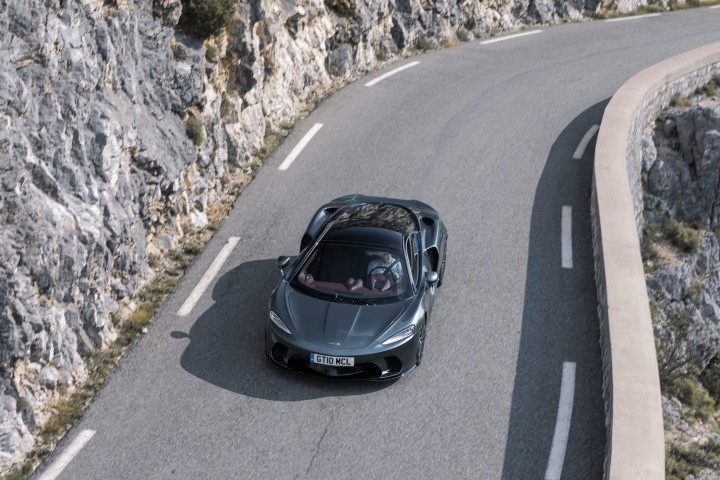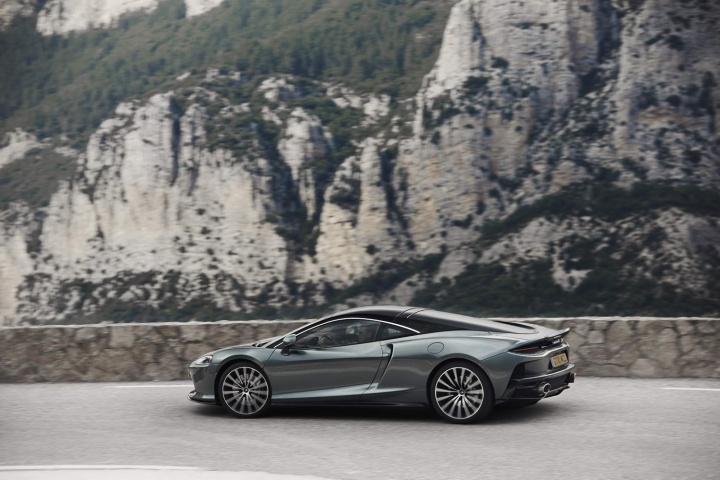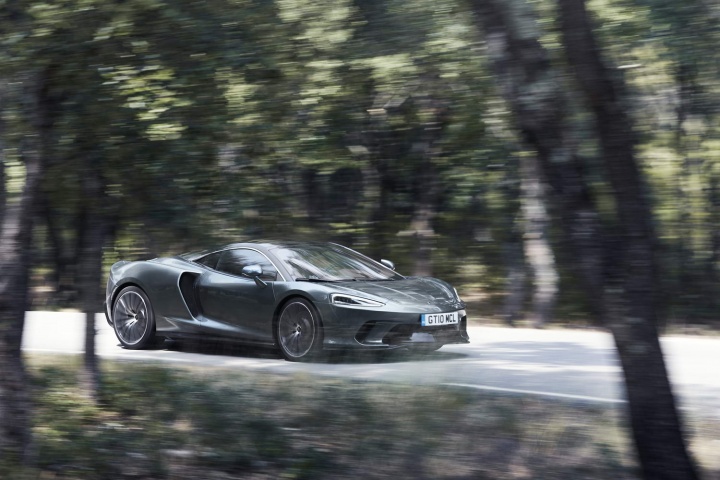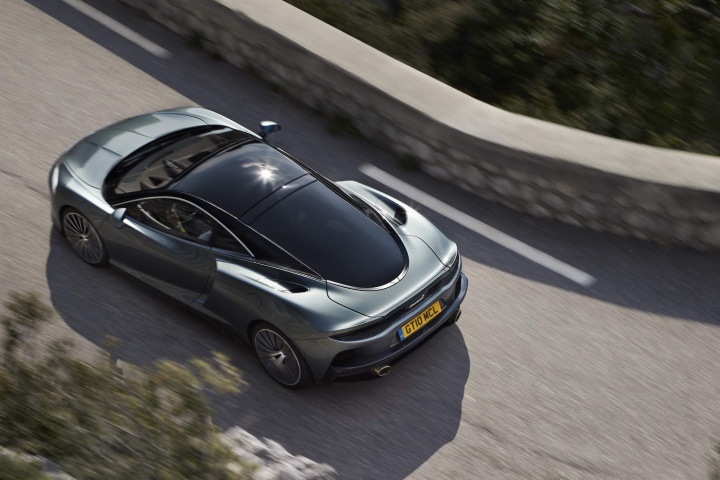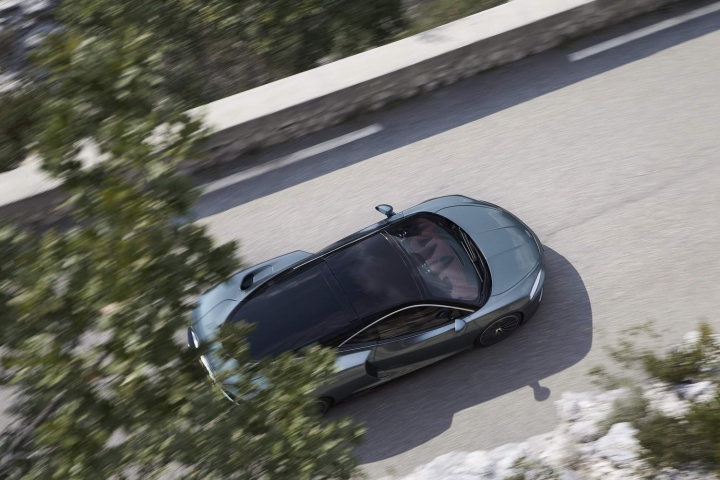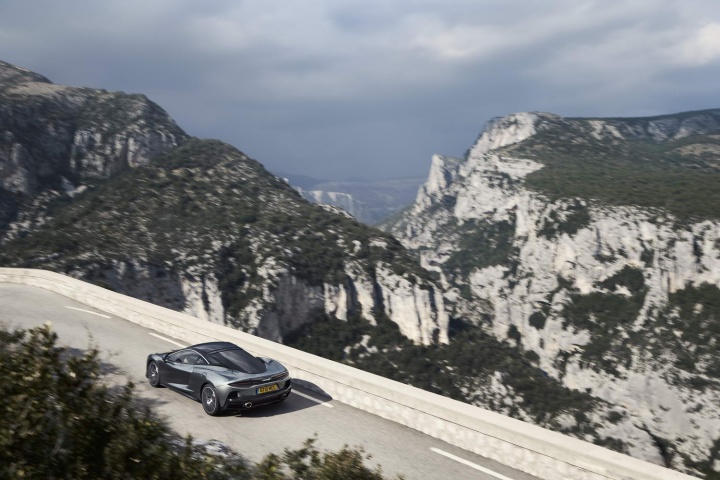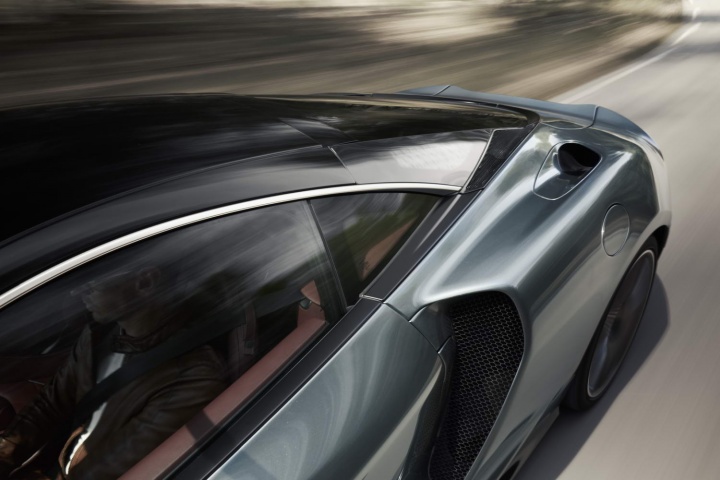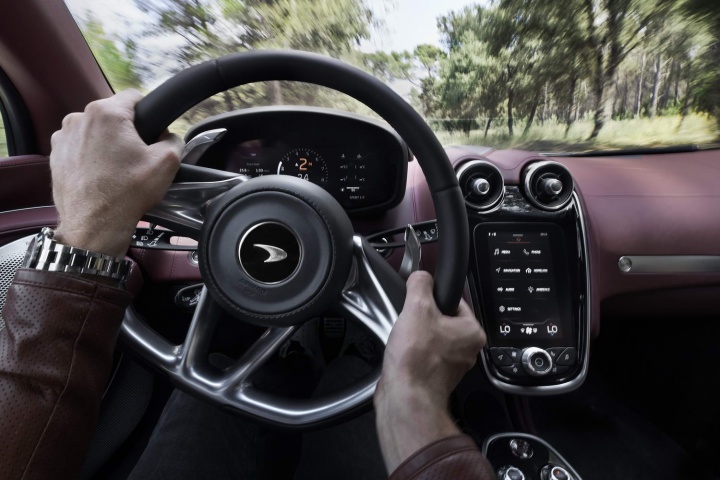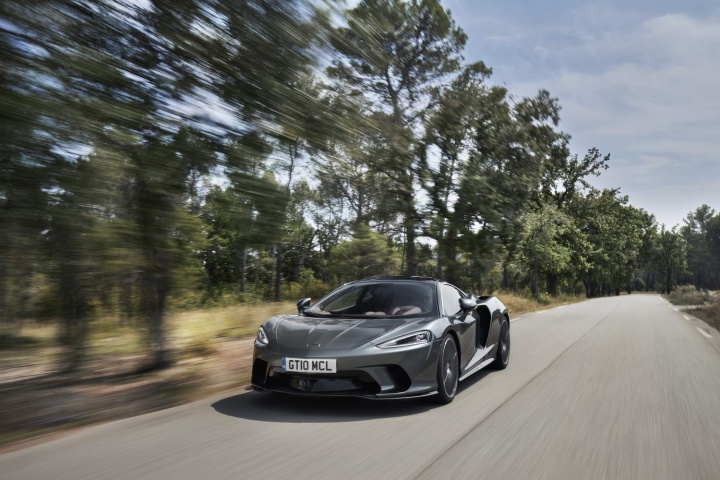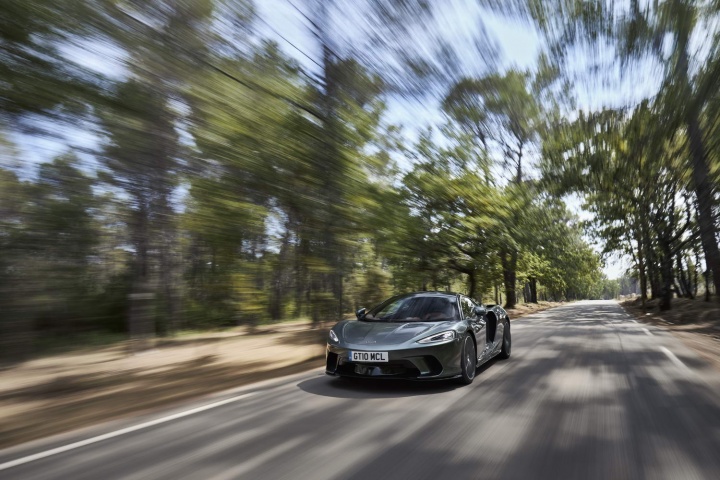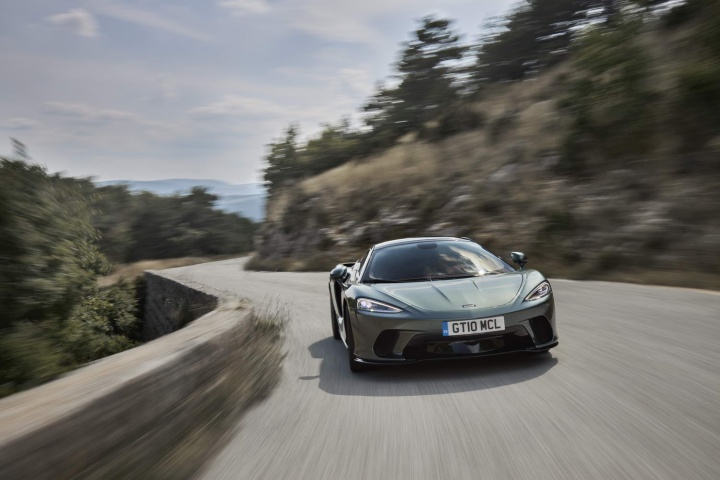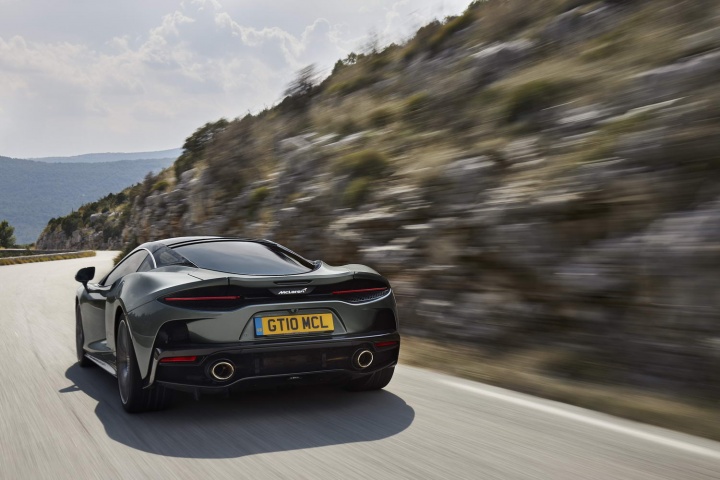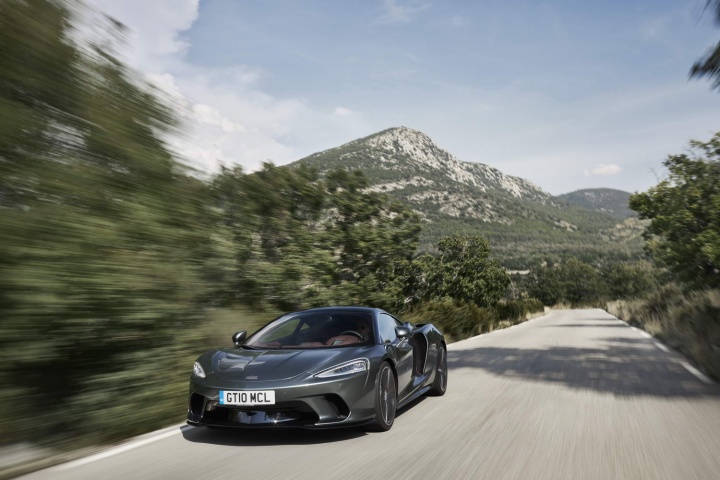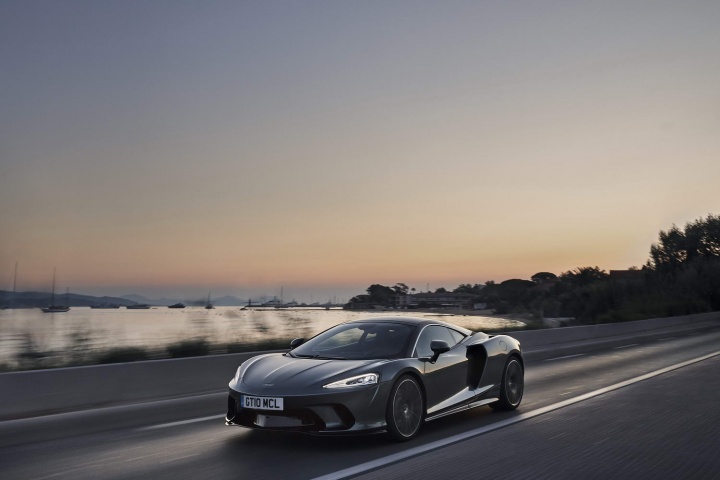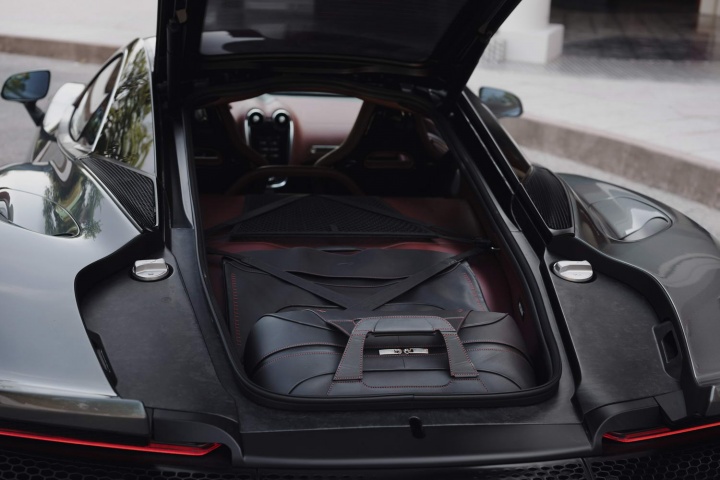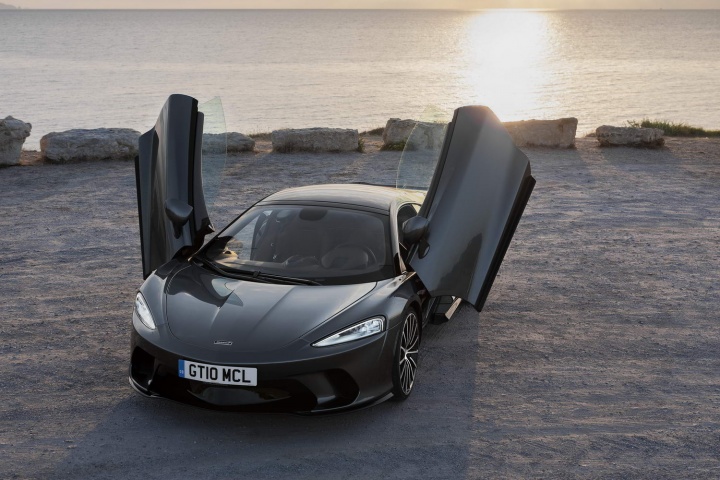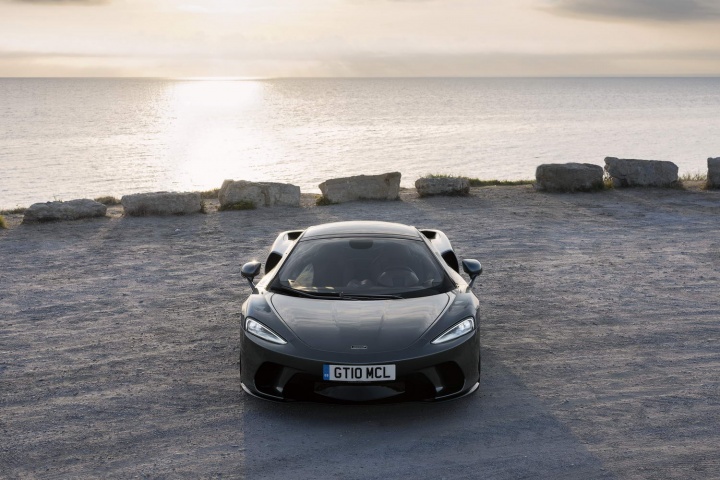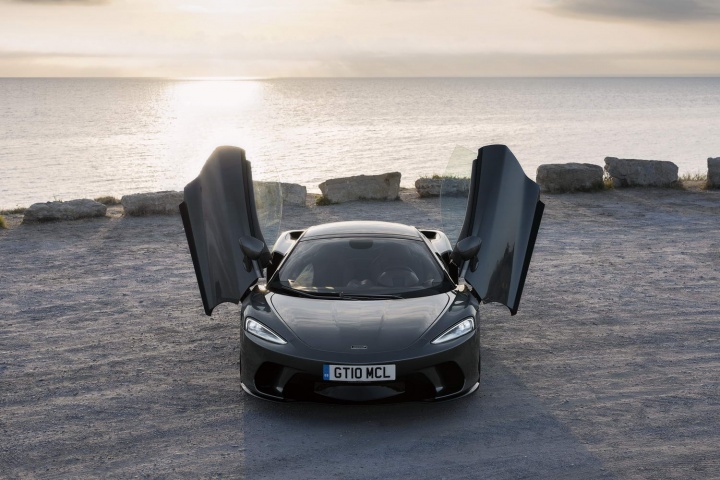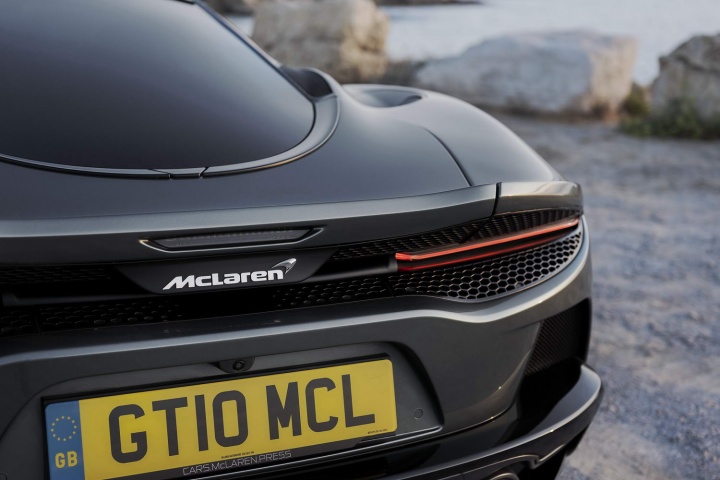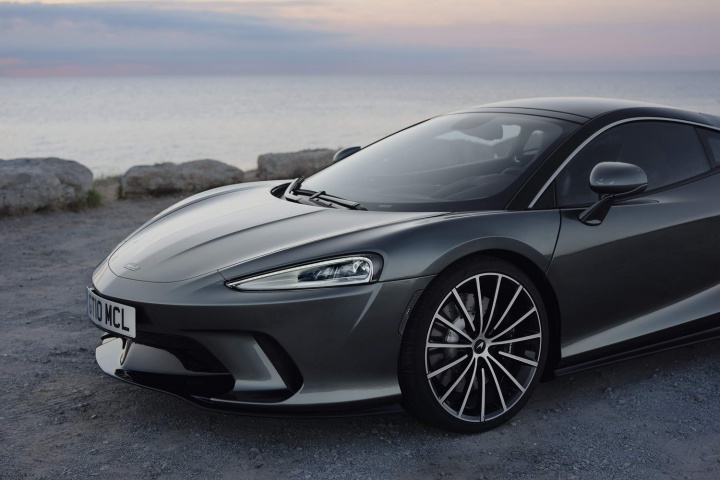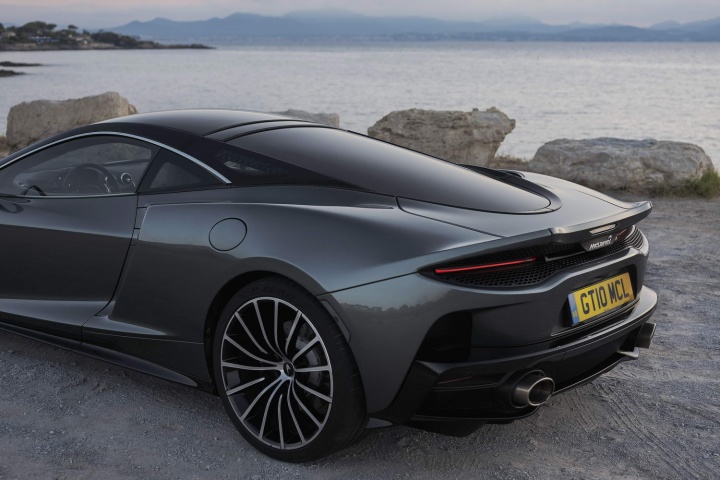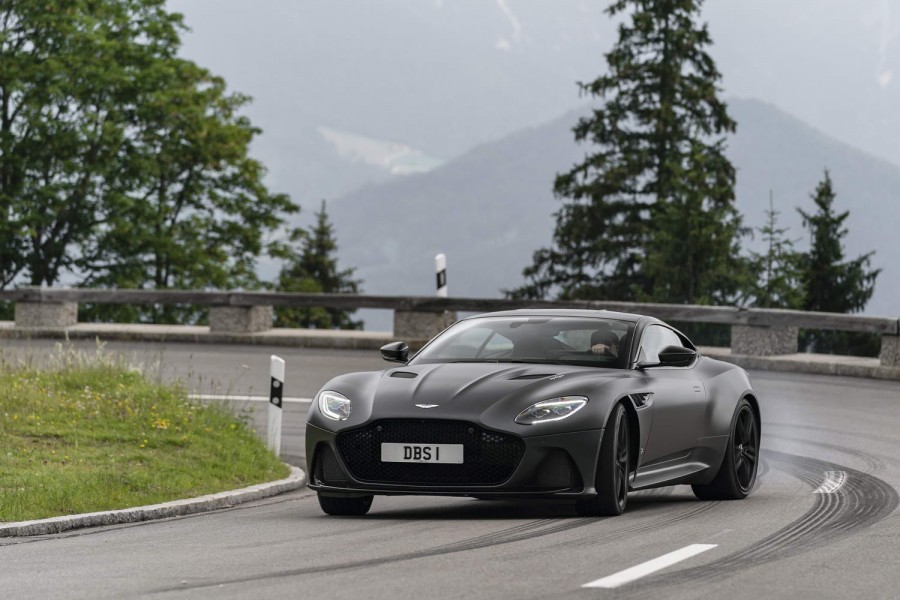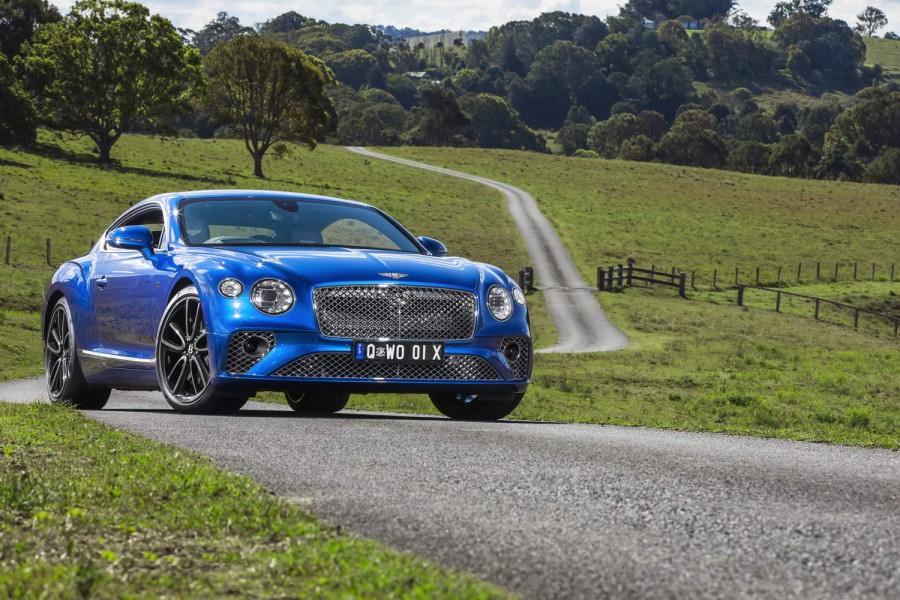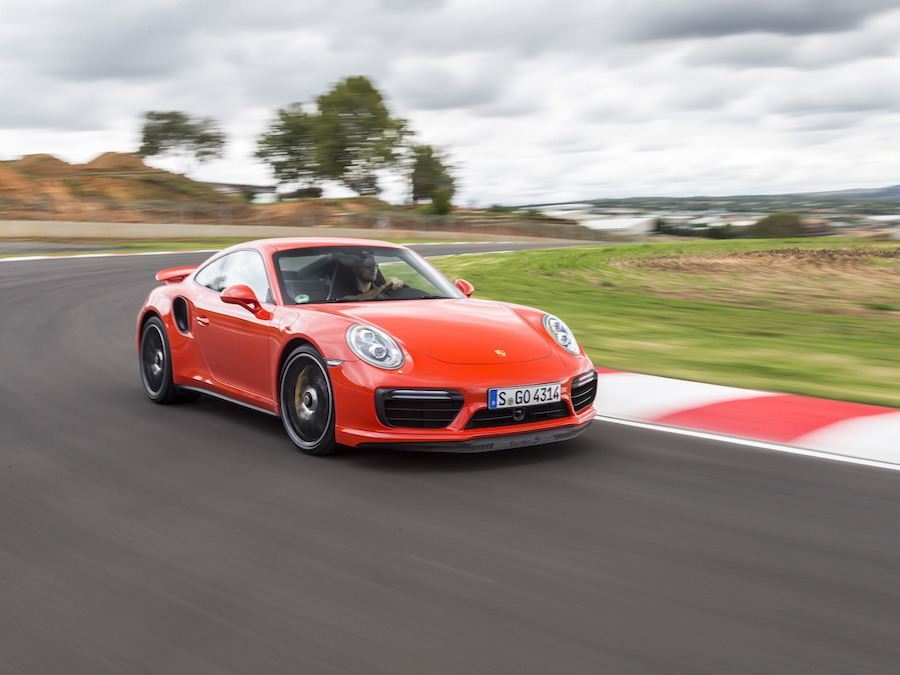McLaren, as part of its 'Track25' plan to launch 18 new models by 2025, has to diversify away from its current range made up purely of blisteringly fast, hugely engaging super- and hypercars. But can a two-seat, mid-engined, carbon-tubbed Grand Tourer really work? The British marque thinks so, and we're here to drive it and find out if this is a successful first step towards diversification for McLaren...
In the metal
Visually, the GT is so clearly a McLaren, the carbon-fibre tub and mid-mounting of the V8 biturbo engine giving the new coupe the same sort of stance that you'd clock with a 600LT or a 720S, but if you've got an aesthete's eye, you might notice that the nose of the GT is higher in profile, or that the car is longer overall - at 4,683mm tip to tail, the only thing McLaren has confirmed for production that's bigger than the GT is the dramatic Speedtail. Overall, there's no denying the GT is a handsome-looking machine, one that best suits a darker colour, and the rear aspect is particularly appealing - but the front is somewhat bland, generic and a touch apologetic. It's quite a 'safe-looking' car front-on.
Part of the reason for the McLaren's raised nose and long frame is to increase interior space in order to try and transform it into a true GT. But there are still only two (bucket) seats inside; there's no concession at all to the idea of this being a '2+2'. Instead, with the V8 engine mounted low in the tub's midriff, McLaren has maximised the space underneath a huge electrically operated tailgate by enough to claim that a pair of skis or a couple of golf bags can go in the 420-litre boot. Furthermore, knowing that the engine and its exhaust system will pump heat into the space directly above them, namely the luggage compartment, a clever 'air blanket' arrangement is said to keep temperatures in the cargo area below 40 degrees Centigrade, even when you're working the car hard in very hot weather.
Up front, it's the usual McLaren digital instrument cluster and beautiful, machined column stalks, plus an updated nav/comms/media system called McLaren Infotainment System II (MIS II), providing a classy ambience. The slightly flattened steering wheel is a near-perfect size and has cool-to-the-touch metal paddles for the seven-speed Seamless Shift Gearbox (SSG), and there's a good range of adjustability to the seats, although McLaren sites the buttons for these down on the squab adjacent to the centre tunnel, so they're not massively intuitive to use at first.
Oh, one final word: the front luggage area on the McLaren is one of the best in the business, as these things go. It's easily bigger than those found in the Audi R8 or Porsche 911, so maybe the GT really does have this practicality thing licked.
Driving it
Much of McLaren's pre-match talk about this car claimed that it was a GT in the McLaren style. As in, it's sportier to drive than any other GT. It has a low centre-of-gravity that's positioned almost right on the driver's hips, whereas your bigger, heftier, plusher front-engined GT will have a centre of gravity hovering somewhere in the dashboard, just underneath the windscreen.
This is all lovely. But a bit contradictory: what, precisely, is the McLaren GT trying to be? A genuine, relaxed Grand Tourer, with the ability to reel off many, many kilometres with an unfussed ease and level of comfort not found in more regular machinery, or a sports car/supercar with a slightly fuzzier edge?
And the sad truth is that our confusion over the McLaren GT's purpose is because it feels like a confused car to drive. Fair enough, for all its success in a notably short space of time (the 1990s legend that was the F1 was part of McLaren Cars, founded in 1985; in reality, the modern-day company began when McLaren Automotive kicked into life in 2010), the British company has to work with the materials it already has in its possession and so it has repurposed the MonoCell II carbon structure as best as it can. But this doesn't feel anything like as polished, urbane and downright comfy as a GT should be. And, similarly, it's a long way from being McLaren's most involving product for the keener driver.
Things start well, nonetheless. Designed with McLaren's focus on all-round visibility, the driving position of the GT is excellent. Even though you're low down in the chassis and ensconced by the scissor doors/centre tunnel (those doors are brilliantly showy, by the way, but ingress/egress isn't the daintiest affair), you can see out over the low scuttle with great ease. In fact, look over your shoulders and you have plenty of clear sight in all directions, so that makes the GT easy to place in a variety of scenarios. This is a classic 'Grand Tourer' trait.
It also rides acceptably, although even in the early stages we start to encounter issues. At low speeds around town, the carbon chassis amplifies the movement of the suspension. Without even breaching 50km/h, a surprising amount of noise transmits into the cabin, mainly from the rear suspension towers. Put it this way, you're always acutely aware of the 20-inch front, 21-inch rear alloys that are suspended on the GT, when these sorts of exotic cruisers should be nigh-on mechanically imperceptible when driving in urban areas.
Out on the road, the ride improves (it feels like the damping works best around 100-120km/h where the suspension noise dies away a bit) and there's not a noticeable upswing in wind noise, although tyre roar starts to make itself known, amplified in the echo chamber that is the GT's odd-shaped cavity of a rear boot. Also, the luggage we'd stowed in the car (one airline carry-on firm-bodied case and one soft leather holdall) was, by this stage, squeaking and rattling around. One of the perils of not acoustically separating the luggage bay from the passenger compartment, we suppose, but again, not massively synonymous with peerless luxury.
Anyway, the McLaren is very pleasant to drive sedately, with the marque's typically magnificent steering proving a delight (the GT's rack is wonderful to deal with, full of feel and nicely weighted too, without being hyperactive or tiring to operate) and the SSG gearbox slushing shifts together well. Yet there are more, um, critical observations here. The first of which is the dull soundtrack; McLaren's V8s, for all their technical majesty, have never been the most exciting things to listen to, but there were times in the GT where the McLaren sounded almost like a turbocharged four, not a bent-eight. Add in a fair chunk of booming, trailing-throttle resonance from the exhausts and at no point, not even when we extended the 4.0-litre motor out to its lofty redline, did the GT have what we'd call an enticing sound.
The brakes were also... not good. There are what seem like centimetres of dead travel at the top of the left-hand pedal's action and then a wooden-feeling biting point before the standard brakes finally start to kick in. You'll be using more force than is strictly necessary just to get the car down from 70-80km/h to a stop for roundabouts and junctions, so we're not just saying they're underwhelming when being used for absolute maximum deceleration; carbon ceramics are an option on the GT, but surely a tourer shouldn't need five-figure brakes that are best suited to track work, should it?
Moving on, we had notable reflections on the steeply raked windscreen from our test car's light-coloured interior. All the upper sections of the dashboard were clearly visible in the driver's sightline in bright sunshine, so dipping in and out of shadow while driving along became a rather unnerving experience. A darker interior finish would get rid of this, of course, but it's worth noting if you have your heart set on a light cabin.
And then there's the actual performance. Now, with 620hp propelling 1,530kg of car, the resulting power-to-weight ratio of 405hp-per-tonne is proper supercar stuff. Throw in 0-100km/h and 0-200km/h stats of 3.2 and 9.0 seconds respectively, and a top speed the far side of 320km/h, and you might expect the McLaren to feel bonkers quick. And yet, curiously... it doesn't. Rag it right out in the lower gears and there's an urgency to the acceleration that's strident enough, but it never feels brutally ballistic, like some of the marque's other cars with similar outputs do. Admittedly, the GT is about 300kg heavier than comparable McLarens, but it's also a good 800kg lighter than something like a Bentley Continental GT so we've no idea why the GT felt somewhat lacklustre in our time with it.
This was exacerbated by its in-gear acceleration, which is positively sluggish. With the car in sixth or seventh (and locked in manual mode) and 100km/h showing on the dial, full-bore throttle openings led to what can only be described as lengthy turbo-lag. This is because the peak of 630Nm of torque doesn't arrive until 5,500rpm is showing on the dial - which, again, isn't very GT and is much more like a supercar's torque delivery - but we'd been told by McLaren that more than 95 per cent of that (nearly 600Nm) is on tap from as low as 3,000rpm, all the way out to 7,250rpm. Nevertheless, that aforementioned Bentley, among more, would put in a much stronger showing for in-gear flexibility than this, and it's yet another way that a true GT feels effortless; whereas you have to work a bit harder at keeping the McLaren boiling along, you're more involved in getting the pace from it - that's a supercar characteristic, make no mistake.
Conversely, the handling is impressive but not mesmerising, and nothing like as sharp as McLaren's Sports and Super Series cars. Obviously, this was the aim of the GT in the first place, but as it doesn't feel like it has nailed the GT brief that comprehensively, we'd be surprised if 570GT, 600LT or 720S owners looking for more practicality would be won over by the way the GT handles a series of corners. Throw in a fuel range that spent almost all of the day showing little more than 300km to empty on a full tank (simply not enough for a GT, no matter its power; more like 500-600km would be acceptable), and you see why it is that, with regret, we think the McLaren GT hasn't hit it straps as a long-distance cruiser par excellence.
What you get for your money
There's enough desirability in the McLaren marque that the GT should win plenty of fans and customers, even though it doesn't feel like the best execution of a Grand Tourer that you can buy right now, but a robust starting price of almost €300,000 doesn't make it feel particularly good value in a marketplace where more accomplished GTs reside. Also, the McLaren we tested had another €60,000 of options, many of which you feel ought to be standard fit at this exalted level - things like front and rear parking sensors, a rear-view camera, electrically folding and heated door mirrors and the powered tailgate, for instance.
Summary
If this review sounds overly negative, it's mainly because the GT does not match McLaren's own high standards, more than it being an actively bad car. Broadening the marque's appeal is totally understandable and, right now, developing an all-new chassis for one car wouldn't make any financial sense. But the GT's obvious sports car underpinnings lead to a markedly compromised Grand Tourer, despite McLaren's best efforts to 'civilise' it, while it doesn't offer anything in terms of driver appeal that other products in McLaren's portfolio already provide. Needs some refining, this one - but, if there's hope, then remember that the MP4-12C received so-so appraisal when it came out and look how quickly McLaren knocked that into shape...

